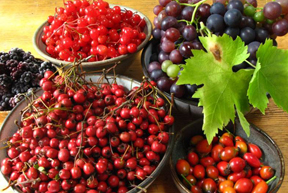 WASHINGTON: Compounds that provide bitter flavor to cucumbers, pumpkins and watermelons – used in Indian and Chinese medicine for thousands of years – may also help treat cancer and diabetes, scientists say.
WASHINGTON: Compounds that provide bitter flavor to cucumbers, pumpkins and watermelons – used in Indian and Chinese medicine for thousands of years – may also help treat cancer and diabetes, scientists say.
Using high-tech genomics, researchers have identified the genes responsible for the intense bitter taste of wild cucumbers.
Taming this bitterness made cucumber, pumpkin and their relatives into popular foods, but the same compounds also have potential to treat cancer and diabetes, researchers said.
That bitter flavor in wild cucurbits – the family that includes cucumber, pumpkin, melon, watermelon and squash – is due to compounds called cucurbitacins. The bitter taste protects wild plants against predators.
The fruit and leaves of wild cucurbits have been used in Indian and Chinese medicine for thousands of years, as emetics and purgatives and to treat liver disease.
More recently, researchers have shown that cucurbitacins can kill or suppress growth of cancer cells.
Bitterness is known to be controlled by two genetic traits, “Bi” which confers bitterness on the whole plant and “Bt”, which leads to bitter fruit.
William Lucas from the University of California, Davis, Sanwen Huang at the Chinese Academy of Agricultural Sciences and colleagues employed the latest in DNA sequencing technology to identify the exact changes in DNA associated with bitterness.
They were able to identify nine genes involved in making cucurbitacin, and show that the trait can be traced to two transcription factors that switch on these nine genes, in either leaves or the fruit, to produce cucurbitacin.
The new research shows how domestication tweaked cucumber genetics to make the fruit more edible. Understanding that process might open up approaches to developing other food crops based on plants that are naturally either inedible or poor in nutrition, Lucas said.
It could also make it much easier to produce cucurbitacins in large enough quantities to use in clinical trials and potentially in medicine, Lucas said.
The research was published in the journal Science. -PTI






